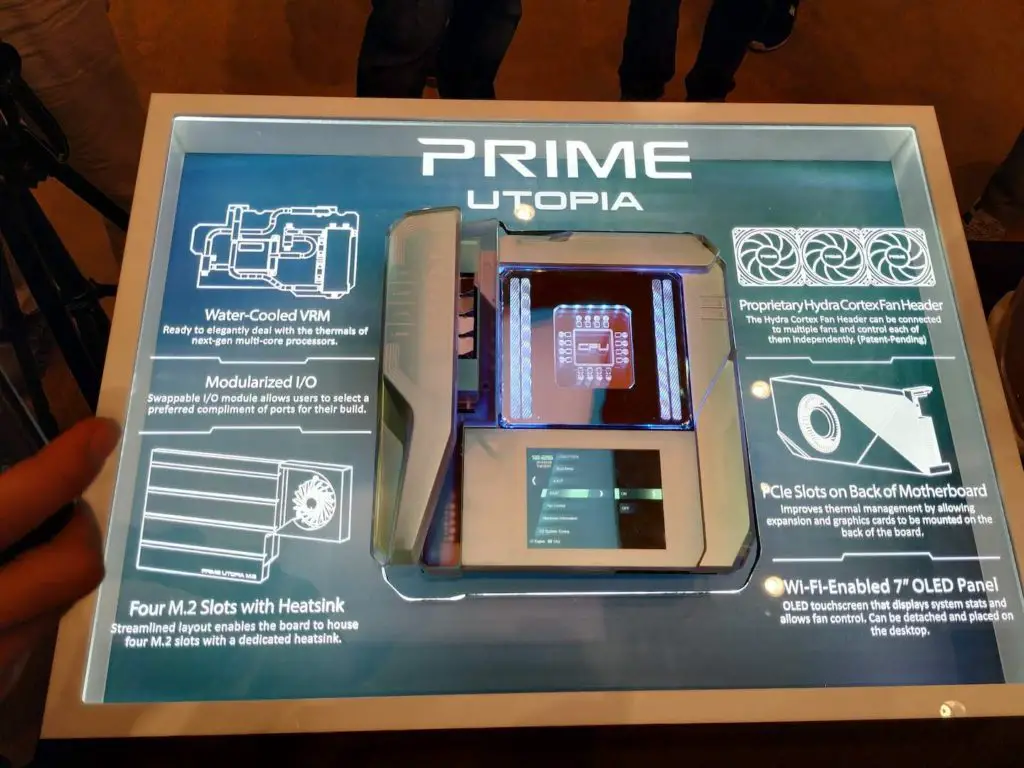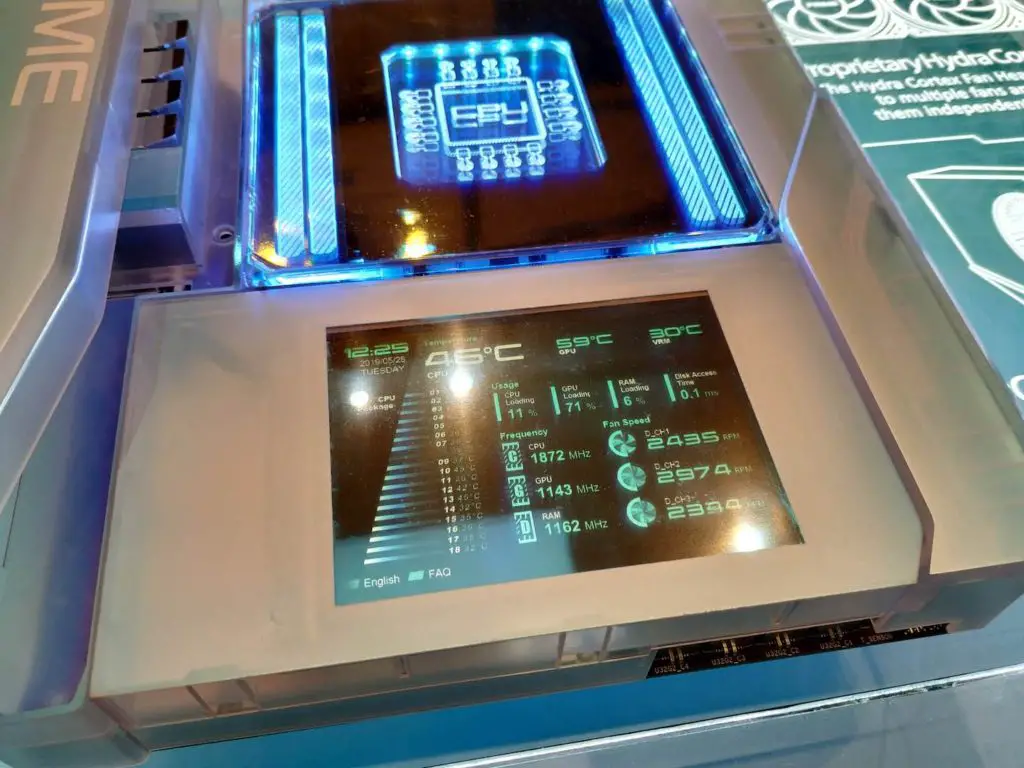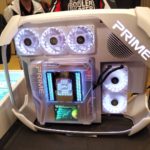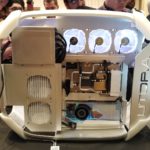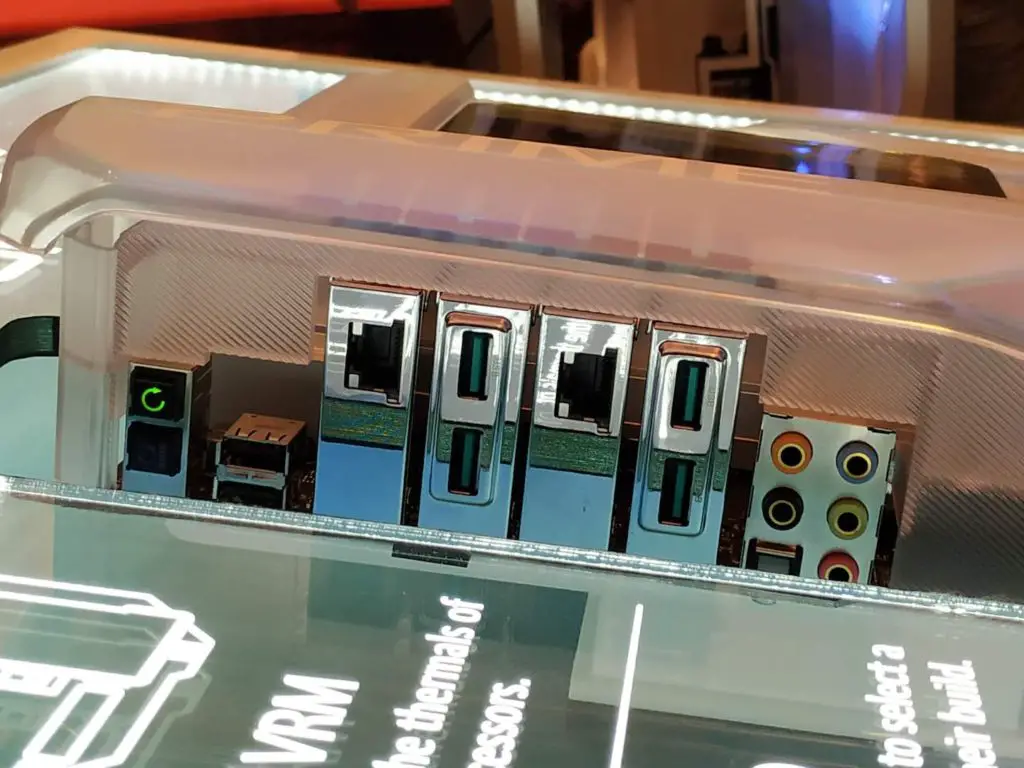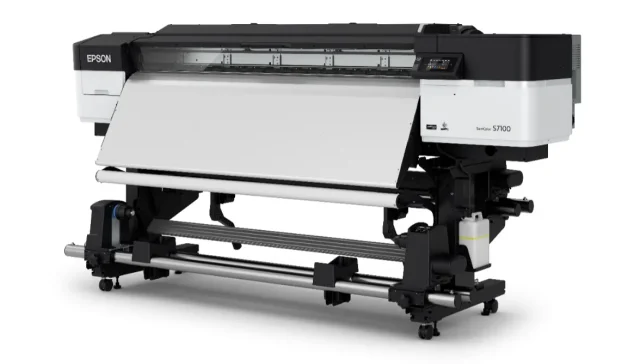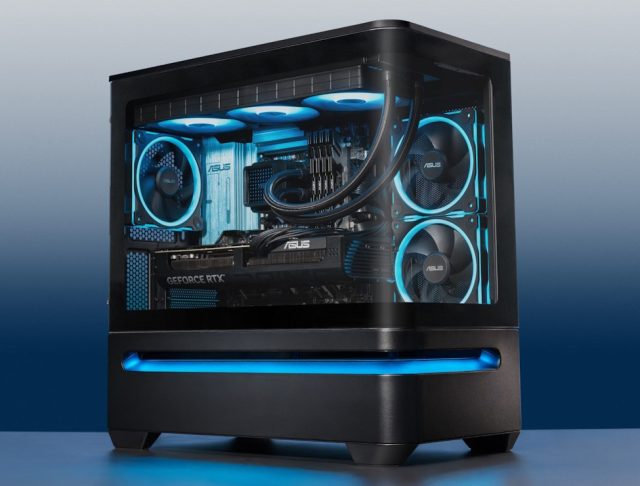Day 0 of Computex 2019, ASUS hosted a special press event in celebration of the company’s 30th anniversary. Apart from the limited-edition devices, which particularly stands out from the rest of the products is the announcement of the Prime Utopia concept motherboard.
Prime Utopia
To commemorate the company’s legacy and success in the motherboard manufacturing industry, the Prime Utopia has been created as an early prototype to show the world ASUS’s vision and aspirations for future high-end desktop motherboards.
The motherboard is engineered with a range of features and enhancements to unleash the full potential of next-generation High-End Desktop (HEDT) system components.
The most prominent feature is no other than the 7-inch OLED touch screen at the front of the motherboard, where PCIe slots are usually present. We’ll address what happened to the PCIe slots later. The display can be connected via cable or WiFi, which means users can choose where to place it to modify settings and monitor the system status.
Now, back to the PCIe slots. Since the convention PCIe slot has been taken by the 7-inch display, they have been moved to the back of the motherboard for improved thermal management. The heat generated from the graphics cards will be kept separated, away from the CPU for throttle-free performance. Of course, ASUS will not be wasting the estate on the front of the board for more M.2 drives.
Speaking of improving the thermal performance, the Prime Utopia also features an integrated water cooling module that helps dissipate the heat generated from the VRMs for a better overclocking result. The patent-pending Hydra Cortex fan header can be connected and control up to four fans individually, simplifying cable routing to CPU water cooling radiators. ASUS is currently working with fan manufacturers and partners to develop fans that are compatible with Hydra Cortex.
Last but not least, for the very first time, we are witnessing the existence of a modular rear I/O. Users are now able to choose which ports and connectivity they would love to have on their system, making it the most flexible motherboard to-date.
While the demo system ASUS having on showcase is a 100% working prototype, however, ASUS still have no plans if this concept will be made into reality. We certainly hope part of the features such as the modular rear I/O would be available soon, at least starting from their high-end motherboards first.


